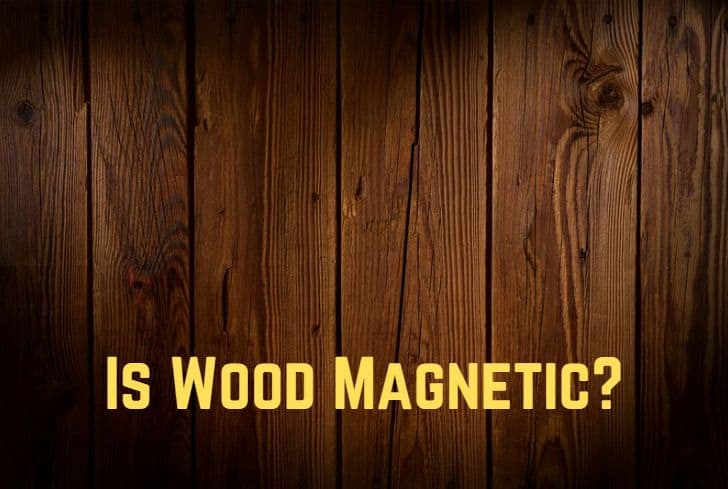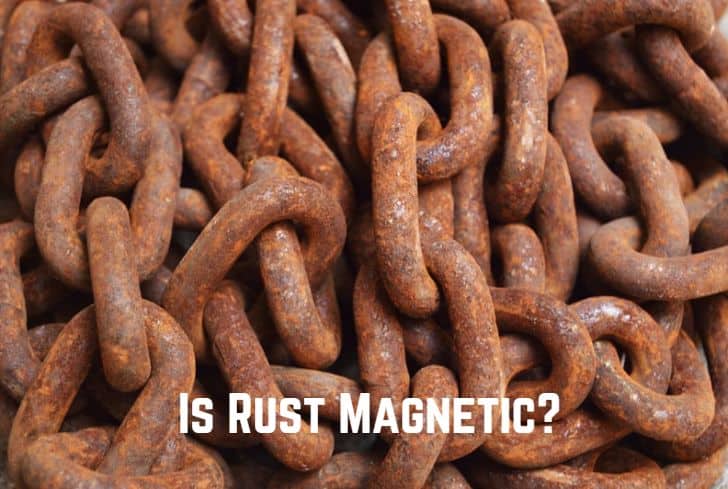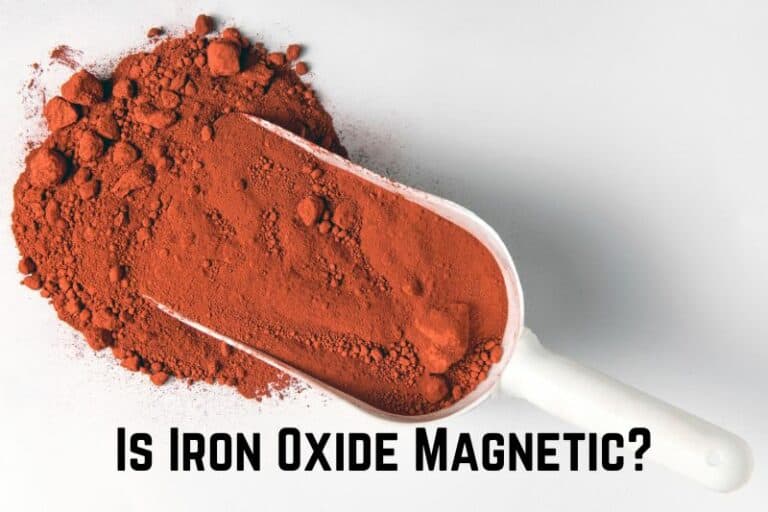Is Galena Magnetic? (Properties & Uses)
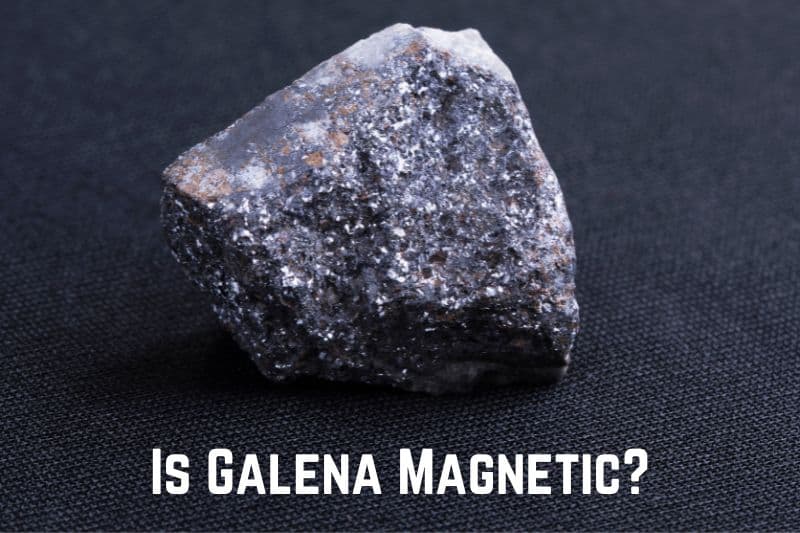
Galena’s ability to emit a stench resembling rotten eggs when struck with a hammer is one of its most intriguing mysteries. Although some may be unaware of its benefits, it has been a grounding stone for generations. However, Galena also has some other interesting properties. First off, is Galena magnetic?
After defining galena, we reply to that question. We will also discuss where galena is found, how it forms in this article, and whether it is toxic, metallic, or non-metallic. Finally, we highlight the properties and uses of galena.
Read: Is Iridium Magnetic? (Properties & Uses)
What is Galena?
Galena is a sulfide ore mineral with 86% lead and 14% silver. However, galena also has other trace metals like copper, zinc, iron, gold, bismuth, arsenic, selenium, cadmium, and antimony. Galena comes from the Latin word ” Galene” (lead ore). It is the most prevalent mineral to extract lead, silver, and occasionally semi-precious stones.
Galena has several sources.
- Sedimentary rocks: Sedimentary rocks are created by weathering and erosion of original hydrothermal deposits. Minerals containing galena are carried by water and deposited in sedimentary basins.
- Secondary enrichment: Under various chemical conditions, water transfers and deposits lead in secondary places after removing them from primary ore formations. Galena can, therefore, be concentrated in certain places through secondary enrichment processes.
- When hot, mineral-rich fluids from volcanic activity circulate through rocks, they form hydrothermal deposits that deposit minerals as they cool. Galena arises when hydrothermal fluids come into contact with sulfur-containing rocks.
Galena can cleave in three distinct directions that cross at right angles, making it easy to identify. The cleavage fragments are cubic and rectangular.
Is Galena Magnetic or Non-magnetic?
Pure galena mineral is non-magnetic. It turns mildly magnetic if the mineral rock has traces of other magnetic metals, such as iron, nickel, and cobalt. Galena comprises atoms of lead (Pb) and sulfur (S), which are organized in a cubic crystal lattice. In contrast to other minerals exhibiting magnetic properties, Galena doesn’t have the atomic configuration and combination required to exhibit magnetism.
Therefore, we can confidently say that galena is diamagnetic. Galena has no unpaired electrons. When all the electrons are paired, there is no permanent net magnetic moment per atom. Galena has a weak, negative susceptibility to magnetic fields and is not attracted to magnets.
Not all diamagnetic substances abide by Curie’s law. Hence, Galena is still diamagnetic even at higher temperatures. Temperature changes have no impact on a diamagnetic material.
Is Galena Toxic?
Galena is poisonous, yes. It contains lead, which is extremely harmful to human health. Excessive lead dust inhalation results in plumbism, which harms human organs and tissues. The kidneys, intestines, heart, intestines, reproductive system, and neurological system are the human bodily parts most commonly affected. Galena exposure over an extended length of time causes lead poisoning.
Lead poisoning, especially in young children, has been linked to death and brain damage. Lead damages the brain over time by forming a stable and durable combination with blood haemoglobin. The negative effects of lead have been demonstrated in some situations, like the Flint water crisis.
Due to the potential health dangers, lead-containing paints, canning solder, and gasoline have all been banned in various countries. Many schools substituted a less hazardous mineral for Galena in the student mineral kits.
So always wash your hands after coming in contact with Galena. Avoid breathing in dust while crushing galena material.
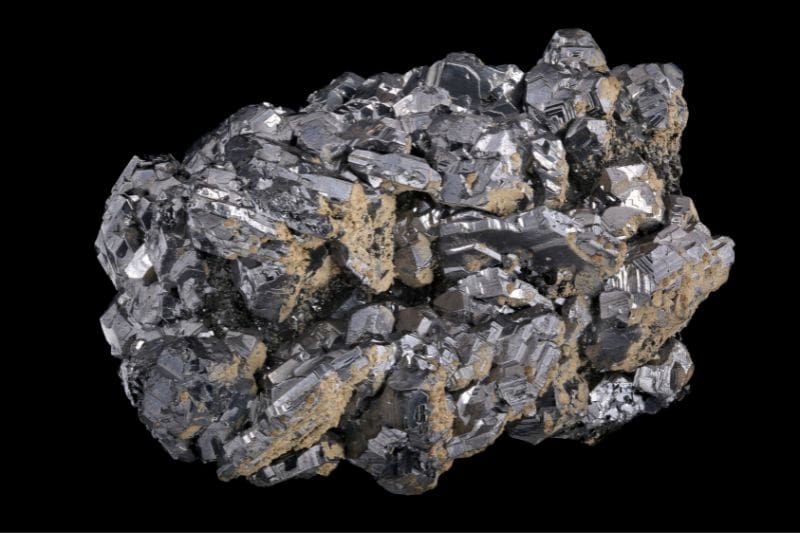
Is Galena Metallic or Nonmetallic?
Galena is metallic, though softer than glass. It is a cubic-cleaved metallic lead-gray mineral. Galena is substantially heavier for identical-sized chunks due to its distinctly high density compared to other metallic metals. It melts at low temperatures, which makes it easier to work with than most metals. The hardness of a galena is compared to that of a fingernail.
Luster in a metal describes the overall sheen of its surface. The metal might be metallic, submetallic, or non-metallic. We give the differences between the three.
- Metallic luster: Possesses the appearance of polished metal.
- Submetallic: Displays a dull appearance due to weathering or corrosion. Sphalerite, hematite, and cinnabar metals are some examples.
- Non-metallic: Does not even remotely resemble a metal.
When new, galena has a brilliant metallic sheen that ages gracefully.
Where is Galena Found?
Galena is found mostly when lead ores are found. It is the most significant and typical source of lead production. Bulgaria, Australia, various regions of Northern Israel, the United States of America, and England are the countries with the most well-known galena ore deposits. Due to Galena’s economic significance, Illinois has a town by the same name.
We highlight the specific sites where Galena ores are found.
- Bulgaria: Madan and Rhodope mountains.
- Canada: Sullivan mine (British Columbia), Kidd Creek mine.
- Australia: Broken Hill and Mount Isa.
- England: Freiberg (Saxony), Cornwall, Mendips(Somerset), Derbyshire and Cumberland.
- Italy: The ancient mines of Sardinia.
- United States: Driftless area of Illinois, Iowa, Wisconsin, Lead belt in southern Missouri, Kansas, Oklahoma, Utah, Montana, Idaho, and Colorado.
It’s important to note that specific Galena sources can vary. Economic factors, environmental regulations, technological developments, and sustainability issues might impact Galena mining.
Professor Shawn Willsey from the College of Southern Idaho explains in his YouTube channel.
How is Galena Formed?
Galena is formed in hydrothermal veins in metamorphic or igneous rocks at moderate to low temperatures. Additionally, it produces solitary grains, dolostone and limestone substitutes, veins, and breccia cement in the form of sedimentary rocks. Fluorite, sphalerite, and calcite are only a few gangue minerals closely related to galena ore.
The hydrothermal fluids are the only source of argentiferous galena. Galena can also be found in lead-zinc deposits. Galena crystallizes as a sulfide mineral in the cubic crystal system and frequently displays octahedral forms. Low-temperature lead-zinc deposits inside limestone layers produce galena in the form of sphalerite.
Galena crystallizes into isometric crystals with a sodium chloride-like ionic structure. It eventually weathers to secondary minerals of lead or silver. Galena can occasionally be used as an ore for copper, zinc, and antimony.
Properties of Galena
Galena is a mineral that contains lead sulfide and has the chemical formula Pbs. It has been relied on for centuries as an ore for lead and silver. We highlight the chemical and physical properties of galena in the table below.
| Physical | Chemical |
| -Bright metallic luster. | -Melts at relatively low temperatures of 1,114 °C (2,037 °F). |
| -Fresh galena pieces have a distinct silver color, which tarnishes to a dull gray. | -Possesses a molecular mass of 239.27 g/mol. |
| -Streaks from lead gray to black. | -Galena has a superb three-way cubic cleavage. That indicates that it disintegrates along parallel, flat, smooth surfaces. |
| -Brittle and creates beautiful cubes when cleaved in three directions. | -Galena has a hardness of 2.5 on the Mohs scale, making it soft and scratchable. |
| -High density and soft. | |
| -Insoluble in water but can be dissolved in nitric acid to form sulfur dioxide and lead (II) nitrate. |
Read: Is Ferrite Magnetic? (Yes. It is)
Uses of Galena
Galena uses have evolved. Most of Galena’s historical usage has decreased due to environmental and health concerns. Health hazards have been well-documented, revealing lead to be toxic. Therefore, we shall focus our attention on its limited modern-day applications.
- It serves as a radiation shield in the medical industry to reduce X-ray exposure to patients and staff. Medical institutions, nuclear power plants, and industrial radiography are some of its other uses.
- Galena is a naturally occurring semiconductor material that currently has a very limited application in modern society. Both computer and television monitors are made of lead.
- Galena is a unique mineral with unusual cubic crystals and a metallic sheen. Many collectors and researchers study its crystalline properties. Galena could be a part of a region’s cultural and geological legacy based on lead mining history.
- Lead is used to make the lead-acid batteries that power automobiles. The batteries are power sources for various systems, including communication networks and computer systems.
- One of the metals used for energy storage systems for hybrid cars and power plants is lead.
- Additionally, Galena contains enough silver impurities to serve as a source for that metal.
Note: The “lead” in pencils is graphite and clay, not lead, as commonly believed.
Conclusion
Galena that occurs naturally is not magnetic because it lacks unpaired electrons. It can, however, be slightly attracted to a magnet if it contains traces of metals or minerals with magnetic properties. Galena is a diamagnetic material. Hence, temperature has no impact on it.
Galena is regarded as toxic because of the presence of lead, and it needs to be handled carefully. It has been known to result in death or brain damage for young children.
Frequently Asked Questions
How do you get silver from Galena?
The Parkes process is applied the most frequently. First, metallic lead is formed by reducing the argentiferous galena. The molten lead then receives zinc. In this case, zinc is less soluble than silver. Therefore, most of the silver is carried away by zinc as it rises to the surface. The silver is subsequently extracted from the zinc/silver alloy by roasting.
Is Galena a good conductor of electricity?
Galena is a natural semi-conductor. It lacks free electrons that could transfer charge. Its electrical conductivity value, however, is in the middle of that of an insulator and a conductor.



